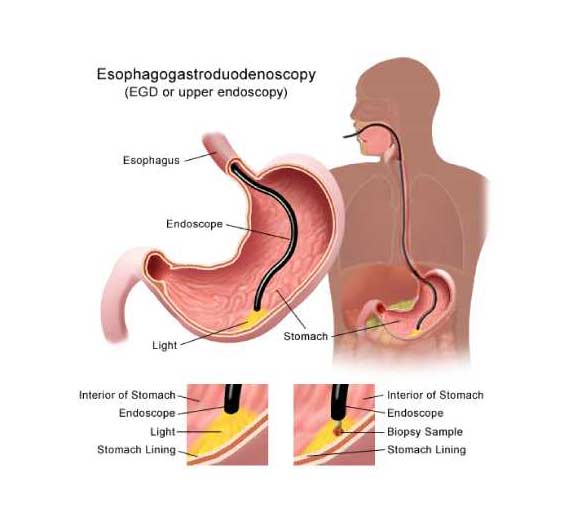What is an upper GI endoscopy?
Endoscopic surgery uses scopes going through small incisions or natural body openings in order to diagnose and treat disease. An upper GI endoscopy or EGD (esophagogastroduodenoscopy) is a procedure to diagnose and treat problems in your upper GI tract (gastrointestinal tract). The upper GI tract includes your food pipe (esophagus), stomach, and the first part of your small intestine (the duodenum).
This procedure is done using a long, flexible tube called an endoscope. The tube has a tiny light and video camera on one end. The tube is put into your mouth and throat. Then it is slowly pushed through your esophagus and stomach, and into your duodenum. Video images from the tube are seen on a monitor.
Endoscopy of Normal Stomach and Upper Gastrointestinal Tract
Small tools may also be inserted into the endoscope. These tools can be used to:
- Take tissue samples for a biopsy
- Remove things such as food that may be stuck in the upper GI tract
- Inject air or fluid
- Stop bleeding
- Do procedures such as endoscopic surgery, laser therapy, or open (dilate) a narrowed area

